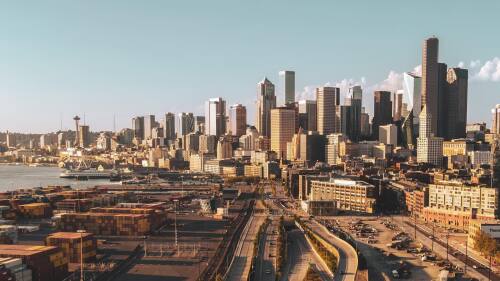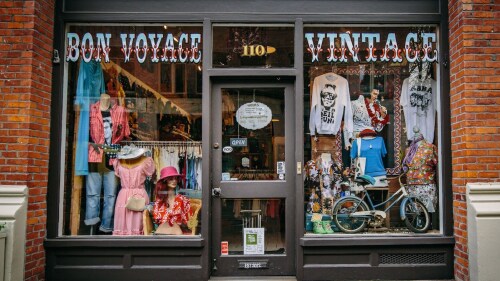If you encountered any of those big traffic jams Thursday or Friday, you are probably acutely aware of President Joe Biden’s visit to the Emerald City last week.
Biden, in first visit to our state as president, came to sign an executive order that requires land managers to define + make a record of all the old-growth forests. It also directs a few federal agencies to write policies to safeguard these areas from threats like wildfires.
That sounds cool and all, but you may be stumped on why this is worthy of presidential attention. Well, let’s talk about it.
🌲 Oldie, but goodies
As implied by the President’s executive order, there’s actually no specific, agreed-upon definition of what an old-growth forest is. But, the agencies and foresters who do come up with their own meaning usually mention one or a combination of factors like:
- A lack of human disturbance (no buildings or logging)
- The age of the trees (makes sense)
- A constant rate of regeneration (dead trees are consistently replace with new ones)
- The trees have passed their economic prime for logging
Most old-growth forests are at least 120 years old, which is still pretty low considering lots of trees can be as old as 400 or even 1,000 years of age.
🌲 Keeping it lush
Okay, so they’re older than the United States itself, but there’s more use to them than meets the eye.
- The bigger the tree, the more carbon dioxide it needs. A single tree can remove as much CO2 as a car produces traveling 25,800 miles. That’s good news for oxygen breathers and folks concerned about climate change.
- Old-growth trees are more fire resistant than the younger underbrush. While we still don’t want them on fire, they’re more equipped to hang on in the event of one.
- They lower air temperatures by providing shade + the evaporation of water through its limbs. They’ve been shown to lower air temps by as much as 4.5° F.
🌲 Where to go
And as we all know here in the PNW, these trees are beautiful. Go take a gander.
- Seward Park | 5902 Lake Washington Blvd. S. | >1 hour drive time | Our closest old growth forest — home to trees 250+ years old — takes up 120 acres of the city park.
- Hall of Mosses | Hoh River Rainforest | 5+ hours drive time | The most famous of our old growth forests — but it’s also not far from the quietest place in the lower 48.
- Stimpson Family Nature Reserve | Bellingham, WA | 2 hours drive time | Check out the 4+ miles of hiking trails and 400+ year old trees. Pro tip: Drive back down Chuckanut Drive for a gorgeous view of the Puget Sound + some more beautiful hiking.











